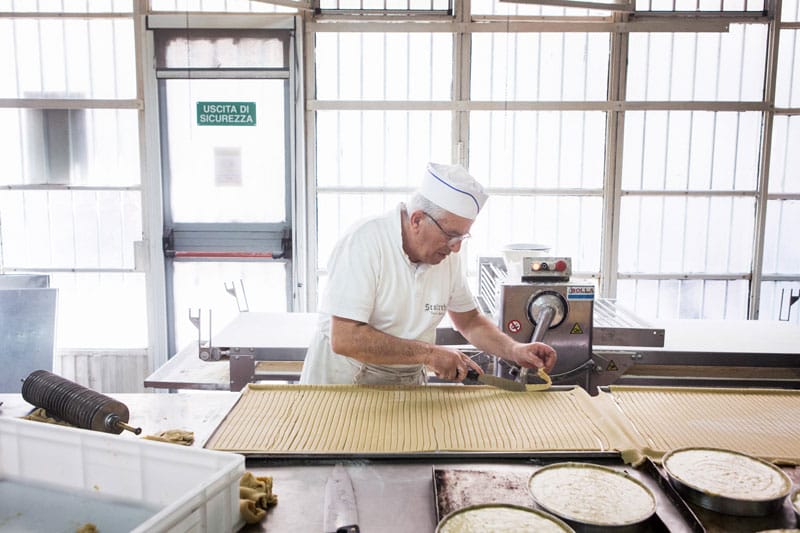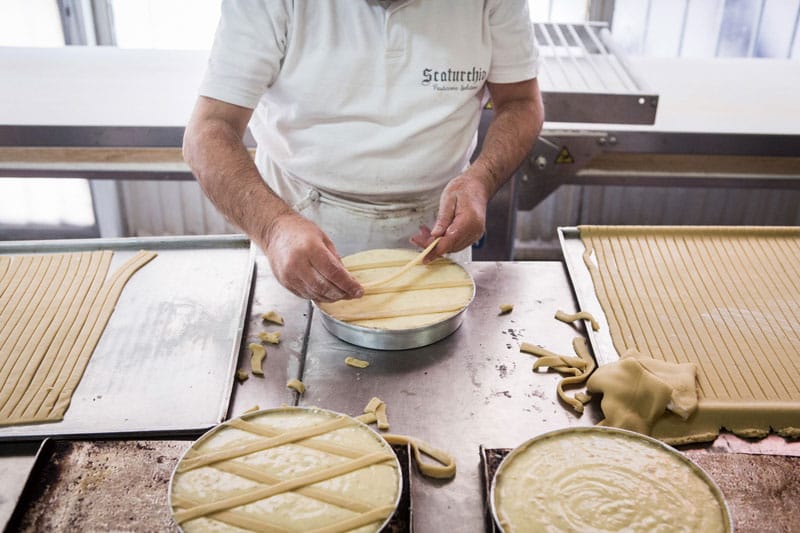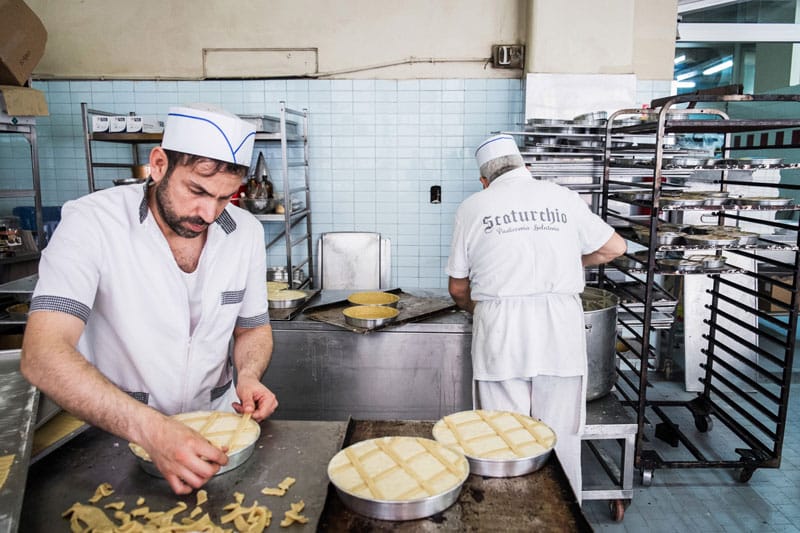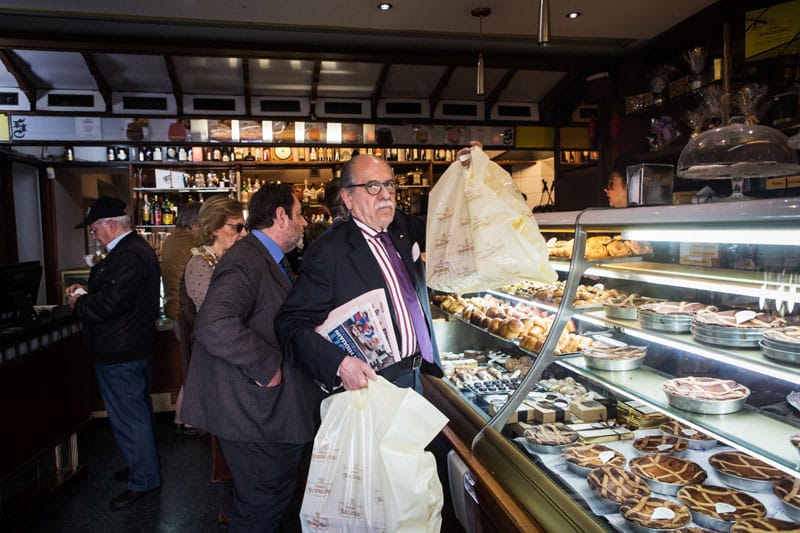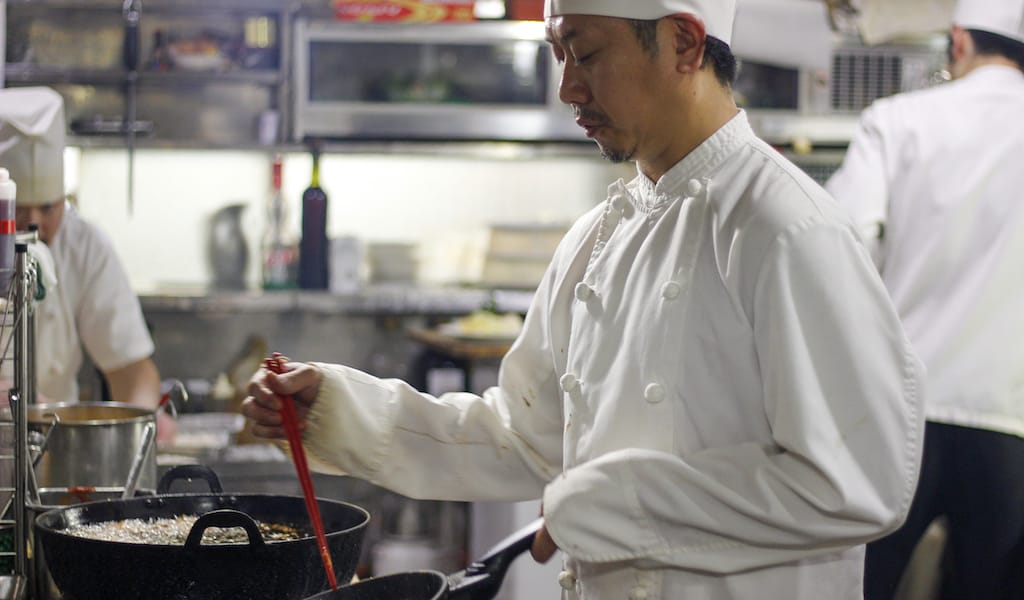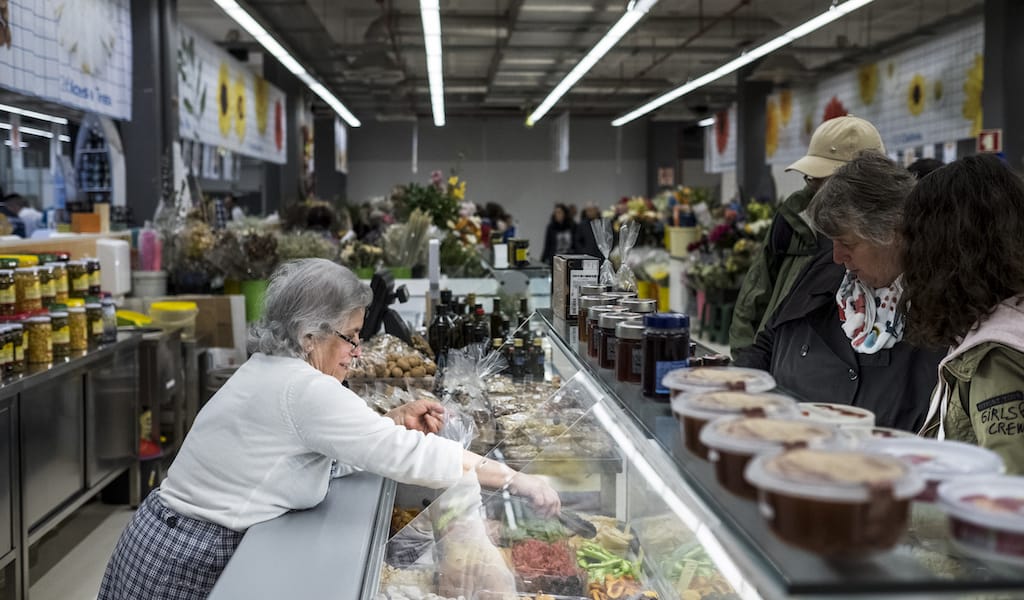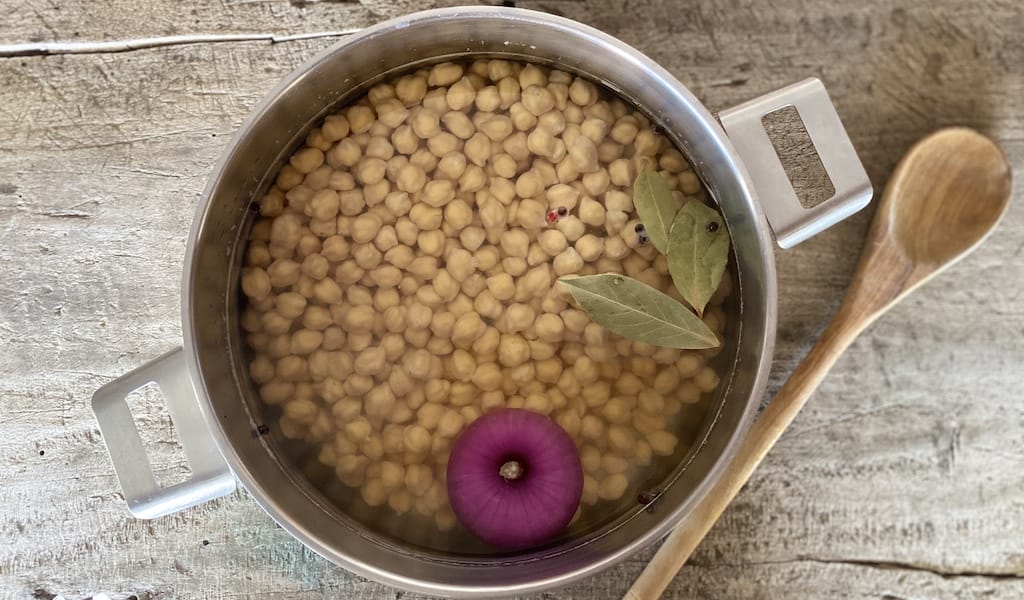Like the Proustian madeleine, sweets can stir up all kinds of feelings in the minds of those who eat them. In Naples, struffoli (small, round doughnuts glazed with honey) and cassata (sponge cake with ricotta and candied fruit) speak of Christmas, while chiacchiere (sugar-dusted fritters) and sanguinaccio (literally “blood pudding,” but actually made of chocolate) bring to mind Carnevale. And then there’s pastiera, whose very scent and taste make us think of Easter and spring.
These days, pastiera can be made all year long, not only when the wheat has just sprouted, as was the case for our ancestors. Yet, when Easter approaches, all Neapolitans dream of this cake.
Everyone has his or her own beliefs about the “true” recipe for pastiera and the superiority of the pastiera della mamma. “Look, you have mistaken memories,” my wife often says to me. “Your mom’s was terrible.” She’s wrong of course; my mother’s pastiera was the best.
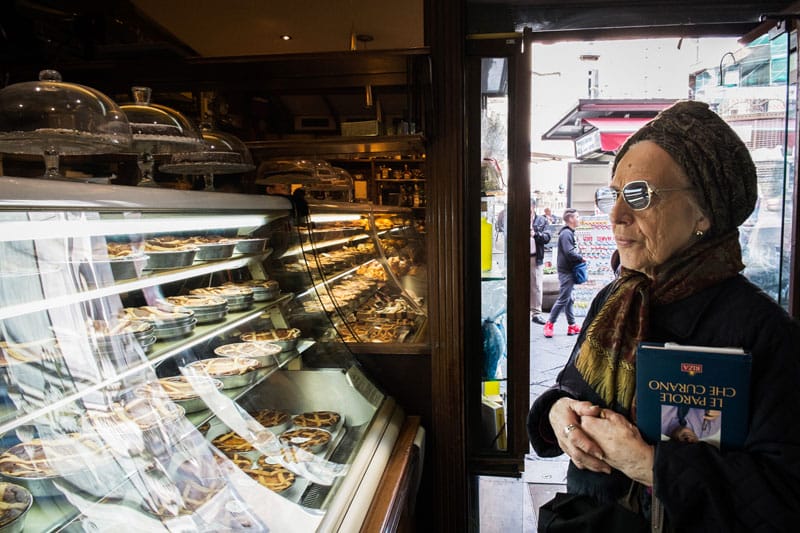
Pastiera is the queen of Neapolitan sweets, yet its composition is relatively simple. Shortcrust encases a filling of ricotta cheese, eggs, boiled grains of wheat, custard, candied fruit and aromatics, including orange flower water. All of this is topped with a lattice of the same pastry.
There are those who prepare this tart with ground wheat because they don’t like the grain whole, still others who won’t add candied citron because they say no one likes it, and beyond that, there are some who add a thick custard, known as pastiera Starace, after the confectioner who came up with the idea.
As with almost all the great Neapolitan pastries, pastiera was born in a convent – specifically, the Convent of San Gregorio Armeno in Naples’s centro storico. The nuns there were the first to bake hundreds of pastiere for the Neapolitan bourgeoisie. And that’s why the best pastiera is still to be found around the monastery. For me, the modern benchmark is the version made by the pasticceria Scaturchio (established in 1905) in Piazza San Domenico Maggiore.
And, as with many great pastries, this one has a legend associated with it. Here’s how it goes: Maria Cristina of Savoy, wife of King Ferdinand II, who ruled Sicily and southern Italy in the first half of the 19th century, was nicknamed “the Queen who never smiles.” One Easter, the court chef prepared pastiera for her. The Queen tried just tried a little bit and was so enraptured that she let out a beautiful smile in public. The king, like all husbands who complain about their sad wives, said: “We needed a pastiera to make my wife smile. Now I have to wait until next Easter to see her smile again.”
For the sake of your own smile, when ordering this sweet, be sure you’re asking for a slice of pastiera and not pastierina, which is made from the same dough but is a different sweet altogether. A pastry shop that has only pastierina might tell you they’re the same: OK, but true pastiera is enjoyed in large slices.
Pastiera is the very symbol of inclusiveness and hospitality, virtues in which the city of Naples has always excelled: the Italian wheat and ricotta play host to citron, which comes from across the Mediterranean, cinnamon from Sri Lanka, vanilla from Mexico – ingredients from all over the world are welcomed with open arms by the orange flowers of the Amalfi Coast.
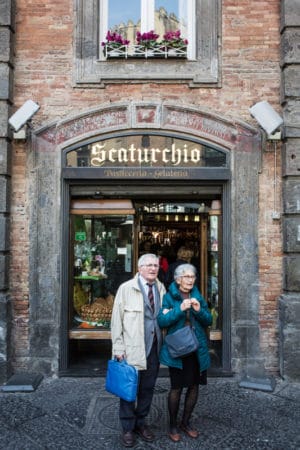 That lattice on top is essential because it keeps the filling from rising too much during baking. It symbolizes the fisherman’s net and the offerings their wives made while they were at sea – and thus also symbolizes this place’s strong ties to seafaring life. The ricotta and wheat signify wealth and fecundity, eggs are a symbol of birth and orange flower of the spring’s arrival.
That lattice on top is essential because it keeps the filling from rising too much during baking. It symbolizes the fisherman’s net and the offerings their wives made while they were at sea – and thus also symbolizes this place’s strong ties to seafaring life. The ricotta and wheat signify wealth and fecundity, eggs are a symbol of birth and orange flower of the spring’s arrival.
When I speak of pastiera, I speak always of Neapolitan pastiera. Making it is an old tradition passed down from one generation to the next. Allow me to be a little politically incorrect then: to prepare a sacred sweet like pastiera you must be a child of Vesuvius. Only Neapolitan chefs are allowed to make the real thing. There, I said it.
This story was originally published on April 12, 2017.
 October 18, 2021 Rengatei
October 18, 2021 Rengatei
We woke one Sunday craving omuraisu, our favorite Japanese comfort food. Omuraisu, […] Posted in Tokyo May 10, 2019 Market Watch – copy
May 10, 2019 Market Watch – copy
On a recent Saturday morning, we climbed Fernandes Tomás Street in Porto, […] Posted in Elsewhere May 5, 2020 Recipe
May 5, 2020 Recipe
Legumes have been at the core of the Greek diet since antiquity, with chickpeas being […] Posted in Athens
Published on April 07, 2023
Related stories
October 18, 2021
TokyoWe woke one Sunday craving omuraisu, our favorite Japanese comfort food. Omuraisu, sometimes rendered as omurice, is an umami bomb: a soft egg omelet arranged over rice studded with a protein such as chicken or pork and a flourish of ketchup-laced demi-glace sauce over the top. So we headed to Edoya, a yoshoku outpost in…
May 10, 2019
Elsewhere | By Jose Rafael
ElsewhereOn a recent Saturday morning, we climbed Fernandes Tomás Street in Porto, following grid drawn on the ground to guide even those with the poorest sense of direction to the temporary location of the iconic Bolhão Market. Originally built in 1839, the market is one of the most prominent structures in downtown Porto. The current neoclassical structure was completed in 1914 and…
May 5, 2020
AthensLegumes have been at the core of the Greek diet since antiquity, with chickpeas being especially popular. We find references to them, and the ways they were cooked, in the works of several ancient writers and poets, including Homer, whose epic poems provide insight into the eating and cooking habits of the time (roughly the…










































